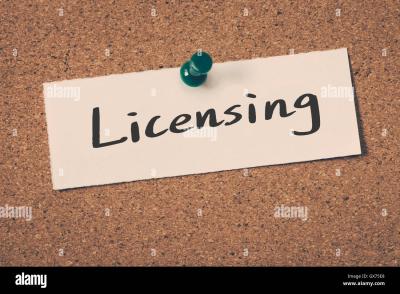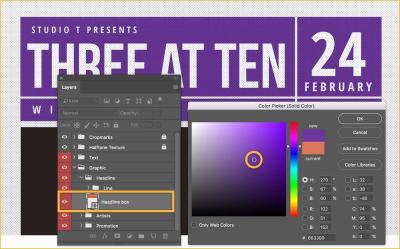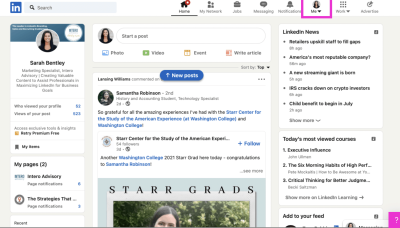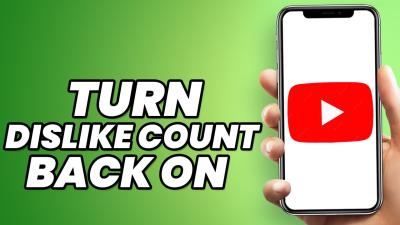When it comes to your LinkedIn profile, the details matter. One of the most crucial elements is the industry you choose to list. This simple yet impactful decision can shape how others perceive you and affect your networking opportunities. In this post, we’ll explore why selecting the right industry is essential and how it can enhance your online presence. Let’s dive in!
Understanding the Importance of Industry on LinkedIn
Choosing the right industry for your LinkedIn profile is not just a formality; it’s a strategic move that can open doors to new opportunities. Here’s why it’s so important:
- Visibility and Discoverability: LinkedIn uses the industry you select to categorize you within its vast network. This categorization affects how easily recruiters and potential connections can find you. For example, if you’re in the tech sector and list your industry as “Information Technology,” you’re more likely to appear in searches related to tech job openings.
- Networking Opportunities: By accurately representing your industry, you can connect with like-minded professionals. Let’s say you’re in marketing; identifying yourself in the “Marketing & Advertising” sector allows you to network with other marketers, learn from their experiences, and collaborate on projects.
- Industry-Specific Content: LinkedIn tailors content based on your industry. This means you’ll see relevant articles, job postings, and discussions that pertain to your field. For instance, if you’re in finance, you might get insights on market trends or investment strategies that can enhance your knowledge and skills.
- Professional Credibility: Listing the correct industry can enhance your credibility. When others see your profile aligns with your expertise, they’re more likely to trust your insights and consider you for collaborations or referrals.
Overall, selecting the right industry on LinkedIn is a vital step in building a strong professional identity. It not only improves your visibility but also helps you connect with the right people and resources in your field.
3. Factors to Consider When Choosing Your Industry
Choosing the right industry for your LinkedIn profile is crucial, as it sets the stage for how you're perceived by potential employers, clients, and collaborators. Here are some key factors to consider:
- Your Skills: Reflect on your strengths and expertise. Are you a tech whiz, a creative genius, or a marketing maven? Choose an industry that aligns with what you excel at.
- Your Passion: It's essential to work in a field that excites you. If you’re passionate about sustainability, for instance, a role in the green tech industry could be fulfilling.
- Market Demand: Research industries that are experiencing growth. For example, healthcare and technology are booming fields. Aligning your profile with these industries can enhance your opportunities.
- Future Goals: Consider where you want to be in five or ten years. If you aim to shift into management, choosing an industry with a robust leadership training program could be beneficial.
- Current Trends: Stay updated on industry trends. Following hot topics can make your profile more relevant. For example, the rise of AI in various sectors is a current hot topic.
By weighing these factors, you can make a more informed decision that not only reflects your current situation but also positions you for future success.
4. Common Industries on LinkedIn
LinkedIn is home to a myriad of industries, making it a versatile platform for professionals across the globe. Here’s a rundown of some common industries you might consider listing on your profile:
| Industry | Description | Examples of Roles |
|---|---|---|
| Technology | Includes software development, IT services, and tech consulting. | Software Engineer, IT Manager, Data Analyst |
| Healthcare | Encompasses hospitals, clinics, pharmaceuticals, and biotech. | Nurse, Healthcare Administrator, Clinical Researcher |
| Finance | Involves banking, investments, and financial planning. | Financial Analyst, Investment Banker, Portfolio Manager |
| Marketing | Focuses on advertising, public relations, and digital marketing. | Marketing Specialist, Brand Manager, SEO Expert |
| Education | Covers schools, universities, and e-learning platforms. | Teacher, Curriculum Designer, Educational Consultant |
By selecting the right industry and clearly communicating your expertise, you can enhance your visibility and appeal on LinkedIn, making it easier for the right opportunities to find you!
5. How to Research Your Industry
Researching your industry is a crucial step in optimizing your LinkedIn profile. Understanding trends, key players, and the skills that are in demand can help you stand out. Here’s how you can effectively research your industry:
- Follow Industry Leaders: Find and follow thought leaders on LinkedIn. This will keep you updated on their posts, articles, and insights regarding industry trends.
- Join Relevant Groups: Participate in LinkedIn groups related to your industry. Groups are great for discussions and can provide a wealth of knowledge from peers.
- Utilize LinkedIn's Search Feature: Use the search bar to find job postings, articles, and profiles related to your industry. Pay attention to the skills and qualifications that frequently appear.
- Read Industry Reports: Look for reports or articles published by reputable organizations in your field. This can provide statistical insights and future projections.
- Attend Webinars and Conferences: Participating in industry events, whether virtual or in-person, helps you network and hear firsthand what's happening in your field.
By leveraging these resources, you can gather valuable information that will not only enhance your LinkedIn profile but also make you more adept in your industry.
6. Updating Your LinkedIn Profile
Your LinkedIn profile is a living document; it should evolve as you progress in your career. Here’s a simple guide to keep it fresh and relevant:
- Verify Your Headline: Your headline should reflect your current role and aspirations. Instead of just your job title, consider including keywords that highlight your skills and goals.
- Revamp Your Summary: Write a compelling summary that tells your story. Use a conversational tone and highlight your achievements and what you’re passionate about.
- Update Work Experience: List recent positions and achievements. Use bullet points for clarity, and quantify your successes where possible (e.g., “Increased sales by 30% in 6 months”).
- Add New Skills: Regularly update your skills section with new competencies you’ve gained. This will also help you appear in searches for those skills.
- Engage with Content: Share articles, comment on posts, and write your own articles to showcase your knowledge and engagement in your industry.
Consistently updating your LinkedIn profile not only showcases your growth but also keeps you relevant in the eyes of potential employers and industry peers.
What to List for Industry on Your LinkedIn Profile
Your LinkedIn profile serves as your digital business card, showcasing your professional identity. When it comes to listing your industry, it’s crucial to select the right category to attract the attention of potential employers, clients, and networks. Here’s how to effectively present your industry on LinkedIn.
Consider the following points when defining the industry section of your profile:
- Be Specific: Choose an industry that closely aligns with your current role or career aspirations. For example, if you work in software development, select "Information Technology" rather than just "Technology."
- Use Keywords: Incorporate relevant keywords in your profile that resonate with your industry. This enhances visibility in search results. For instance, use terms like "cloud computing," "data analysis," or "digital marketing."
- Highlight Your Expertise: Under your industry, mention your specific area of expertise or niche. For example, “Healthcare Technology” or “Financial Services - Investment Banking.”
Here’s an example of how to format your industry listing:
| Industry | Keywords | Expertise |
|---|---|---|
| Information Technology | Cloud Solutions, Cybersecurity | Software Development, System Architecture |
| Healthcare | Health IT, Patient Care | Telemedicine, Health Data Analytics |
In conclusion, carefully selecting and presenting your industry on LinkedIn not only enhances your profile's professionalism but also increases your chances of connecting with the right opportunities and networks.










